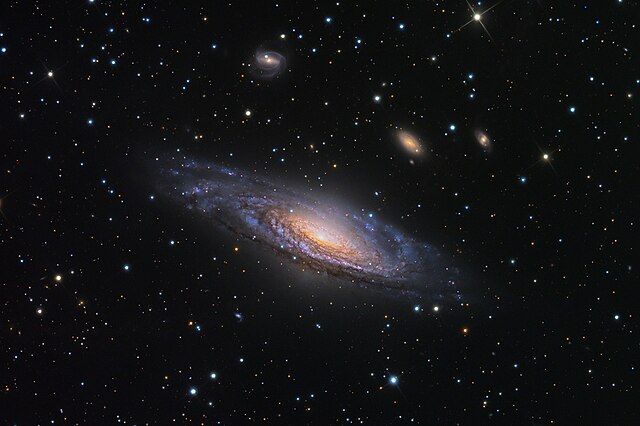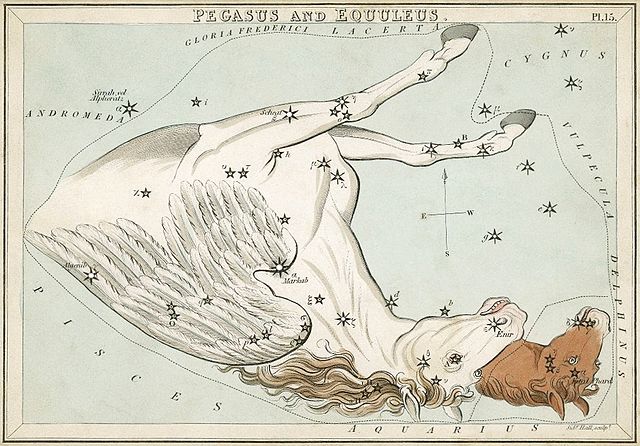NGC 7331, also known as Caldwell 30, is an unbarred spiral galaxy about 40 million light-years (12 Mpc) away in the constellation Pegasus. It was discovered by William Herschel in 1784. NGC 7331 is the brightest galaxy in the field of a visual grouping known as the NGC 7331 Group of galaxies. In fact, the other members of the group, NGC 7335, 7336, 7337 and 7340, lie far in the background at distances of approximately 300-350 million light years.
NGC 7331
Image of a supernova that appeared in the galaxy in 2014 (called 2014C). The inset images are from NASA's Chandra X-ray Observatory, showing a small region of the galaxy before the supernova explosion (left) and after it (right). Red, green and blue colors are used for low, medium and high-energy X-rays, respectively.
Pegasus is a constellation in the northern sky, named after the winged horse Pegasus in Greek mythology. It was one of the 48 constellations listed by the 2nd-century astronomer Ptolemy, and is one of the 88 constellations recognised today.
Pegasus with the foal Equuleus next to it, as depicted in Urania's Mirror, a set of constellation cards published in London c.1825. The horses appear upside-down in relation to the constellations around them.
The constellation Pegasus as it can be seen by the naked eye
Pegasus from Al-Sufi's Book of Fixed Stars, dated 1009-10
Stephan's Quintet photographed by the James Webb Space Telescope






